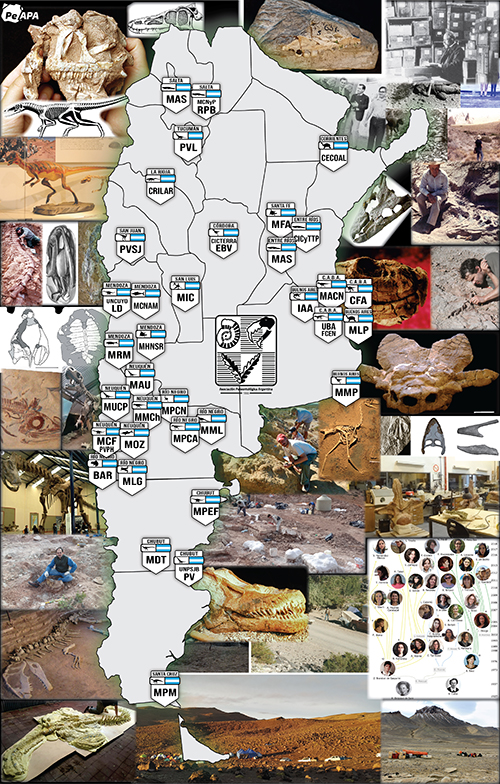TURONIAN FLORA OF NEW JERSEY, USA
Abstract
An extraordinarily diverse flora was discovered in sediments of the Old Crossman Clay Pit, Raritan Formation (New Jersey, USA). The age of these rocks has been estimated as Turonian (≈ 90 MYBP, Late Cretaceous) by palynological and stratigraphic correlations. The environment in which the sediments were deposited is described as fluvial (non-marine) with levee, back levee and swamp conditions. The fossils, preserved as charcoal, maintain their three-dimensional structure, and an excellent morphological and anatomical preservation, offering a unique opportunity for studying characters rarely available for plant fossils. This flora encompasses mosses, ferns, gymnosperms and angiosperms, and a preliminary study is presented here with special emphasis on selected taxa. The Raritan sediments have yielded the oldest records for flowers of hamamelidaceous, capparealean, ericalean, and fagalean affinities and the oldest Clusiaceae as well as the oldest unequivocal monocot. Although the relationships of some taxa are still uncertain, for others the relationships are clear. Thus far, this flora has enlightened our knowledge of several plant groups, in particular the angiosperms. Based on the paleoposition of New Jersey in southern Laurasia in low-middle latitude on the north side of the Tethyan Sea, a tropical to subtropical climate was previously proposed for the Raritan Formation. The elements of the Old Crossman Clay Pit locality are consistent with this conclusion.
KEY WORDS. Raritan Formation. Paleoflora. Cretaceous. Mosses. Ferns. Seed plants.
Downloads
Published
Issue
Section
License

Authors retain copyright and grant the journal right of first publication with the work simultaneously licensed under a CC Attribution-NonCommercial 4.0 that allows others to share the work with an acknowledgement of the work's authorship and initial publication in this journal.






















